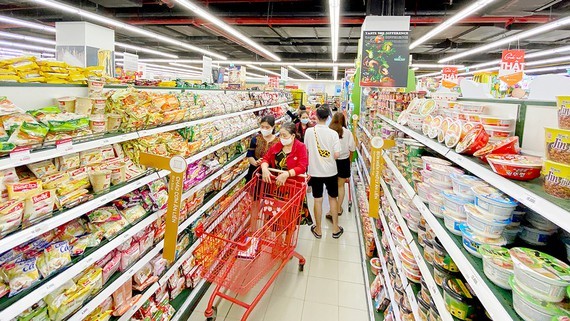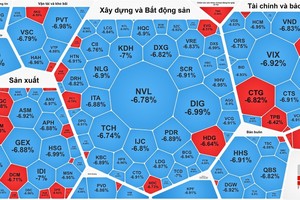
This is still a good sign, showing that the city’s economy has the tendency to gradually recover in the third quarter and is likely to increase faster in the fourth quarter of this year.
According to the Department of Industry and Trade, the index of industrial production (IIP) in August was estimated to increase by 4 percent compared to the previous month. The growth motivation mainly came from the processing industry, which was estimated to increase 4.6 percent over the previous month. Sectors with good growth in August were food manufacturing with an increase of 3.2 percent, textiles with an increase of 5.4 percent, clothing manufacturing with an increase of 6 percent, metal production with an increase of 6.3 percent, manufacturing of products from prefabricated metals with an increase of 21.9 percent, machinery, and equipment manufacturing with an increase of 9.1 percent, other industrial processing and manufacturing with an increase of 20 percent, and electrical equipment manufacturing with an increase of 6.6 percent. Thus, the monthly industrial production has continued to grow fairly well since May. Specifically, the IIP increased 7.9 percent in May, 13.7 percent in June, 8.6 percent in July, and was estimated to increase 4 percent compared to the previous month in August.
Compared to the same period last year, some commodity groups had good growth, such as the food and foodstuff industry whose 8-month revenue was estimated at nearly VND91.25 trillion, up 10.1 percent; garment exceeded VND34.05 trillion, up 5.1 percent; household appliances hit VNS102.85 trillion, up 9.6 percent; wood products and construction materials touched VND14.13 trillion, up 8.1 percent.
To maintain purchasing power amid the current difficult situation, modern distribution networks in HCMC have implemented several promotional campaigns, applied the program to stimulate sales through channels, such as telephone, website, and apps, and supported delivery. The timely change in sales methods has contributed to helping businesses to improve revenue, creating a good effect for the retail market, contributing to improving sales, and drawing consumers back.
The total export turnover of city-based enterprises through the city border gate in the first eight months was estimated at US$26.2 billion, up 3.4 percent over the same period. If excluding crude oil, the 8-month export turnover was estimated at $25 billion, up 5.4 percent over the same period last year. In which, export turnover of agricultural, forestry, and fishery products in the first eight months of this year was estimated at $3.07 billion, up 1.61 percent over the same period last year, accounting for 12.26 percent of total export turnover.
The export turnover of the group of industrial goods in the first eight months of this year was estimated at $19.93 billion, up 5.51 percent over the same period last year, accounting for 79.68 percent. Computers, electronic products, and components hit $11.3 billion, up 26.2 percent compared to the same period last year. Textile and garment exports reached $3.02 billion, down 20.4 percent. Export turnover of footwear of all kinds reached $1.49 billion, down 11.97 percent.
China was still the largest export market for enterprises with export turnover in the first eight months of this year of $6.84 billion, up 35.5 percent compared to the same period last year, accounting for 26.2 percent of export. The US market followed with $4.45 billion, up 3.1 percent over the same period last year, tailed by the EU with $3.21 billion and Japan with $1.9 billion.
























